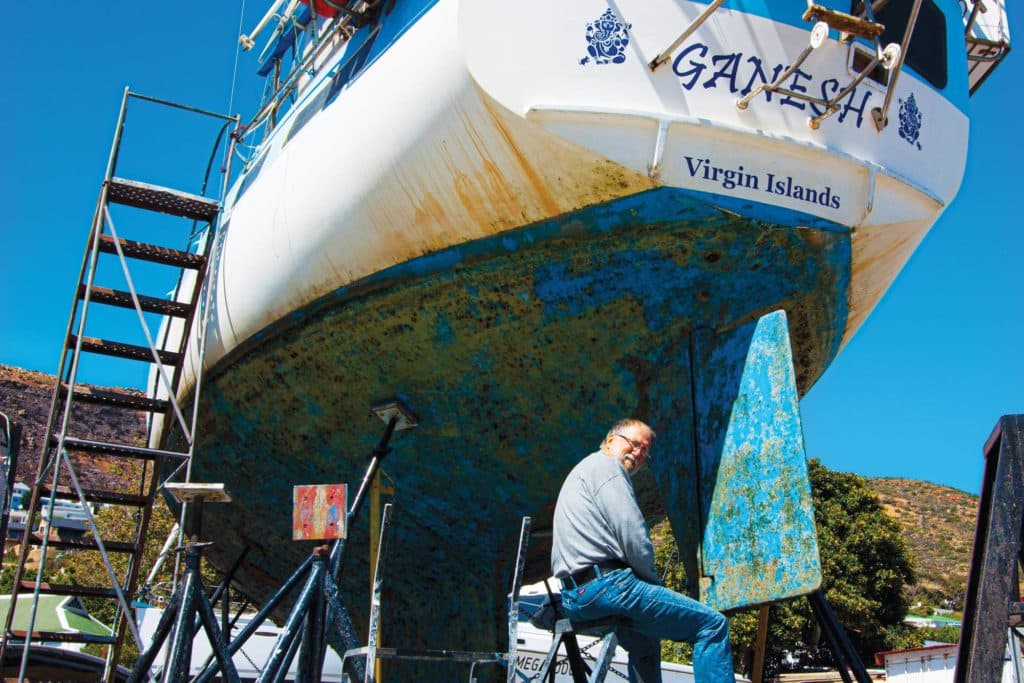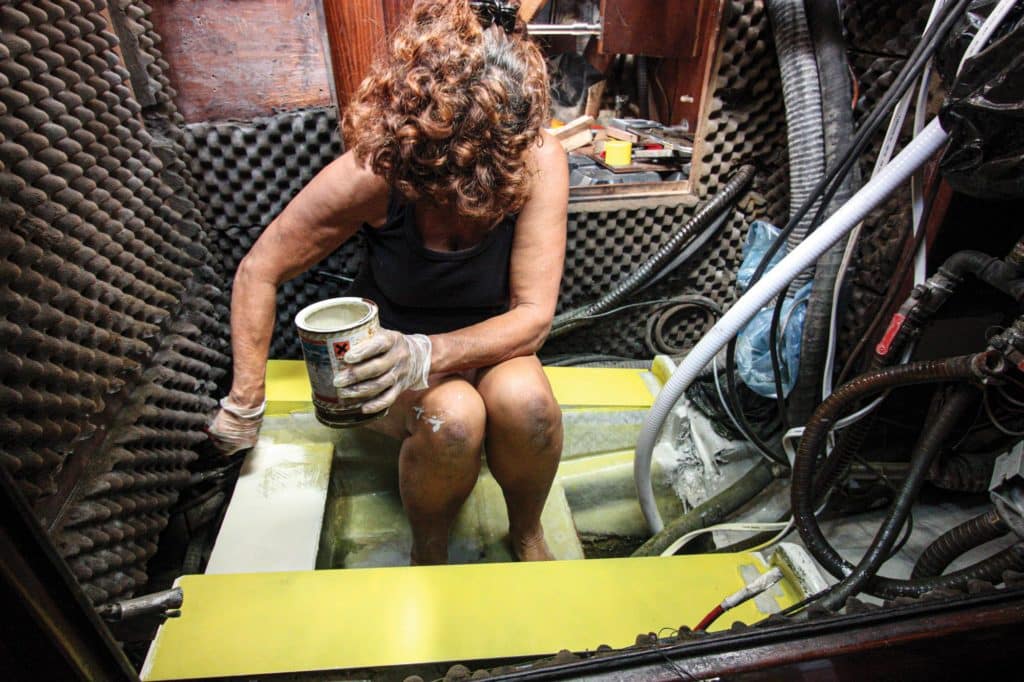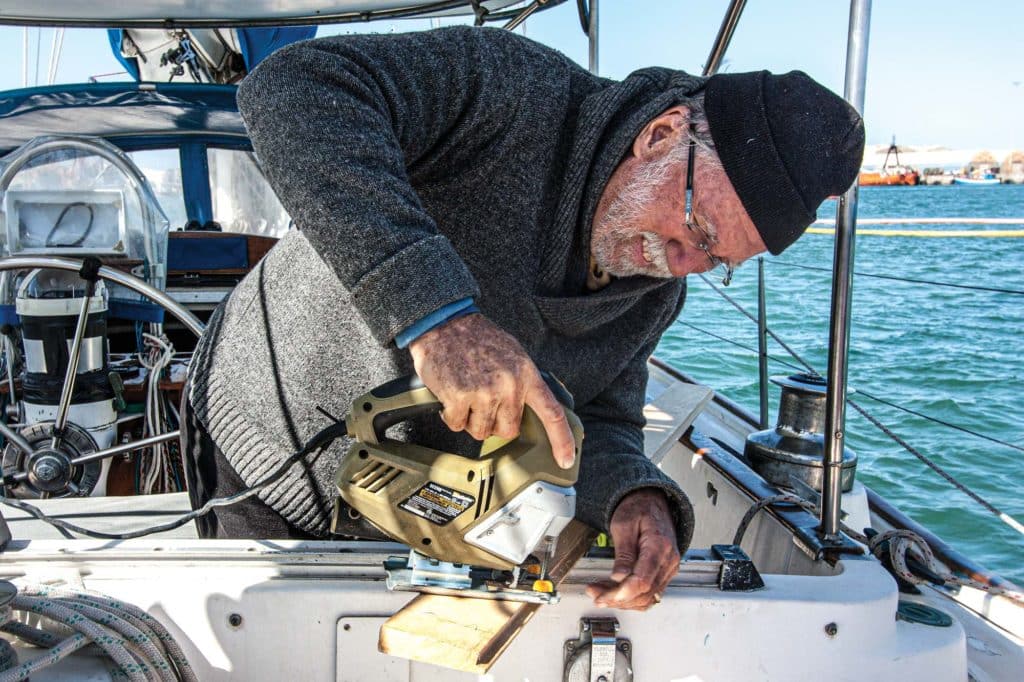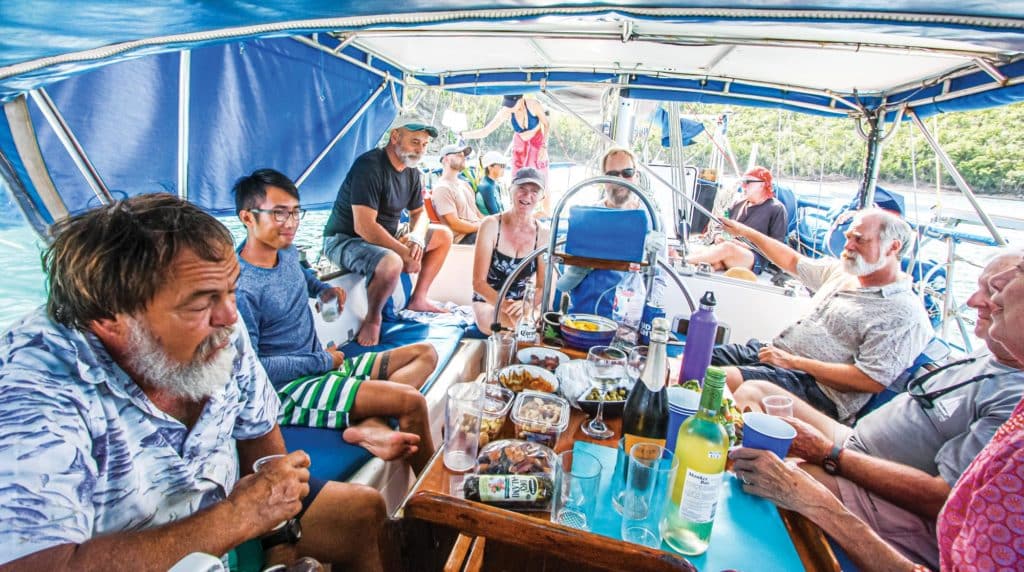
A wealthy Dutch doctor asked me a few years back, “Can I retire and cruise on 20 grand a year?”
“Yes,” I said without hesitation.
I was confident that I was correct because my wife, Carolyn, and I were cruising on considerably less at the time. But then I added this sobering kicker: “The trick isn’t to cruise into the sunset on a modest amount of money; the trick is to maintain your vessel to your personal standards as you do so.”
Ah, there’s the rub!
No one has ever starved while circumnavigating, yet many an extended cruise has come to grief on empty coffers.
Let’s take the Dutch doc as an example. He not only owned an expensive German car, he also had a full-time chauffeur to drive it between five-star eateries in Amsterdam. His wife wore Jimmy Choo heels and sported a Rolex big enough to require its own PFD. Could they live and cruise on 20 grand a year? Sure! Were they going to? Not likely.
The bottom line on offshore cruising budgets: Sailors usually spend what they can comfortably afford to, often citing the familiar refrain of “You only go around once!” Maximizing your fun is human nature, as it should be.
One thing that should be taken into account when voyage planning is that people are vastly different. Couples are different, families are different, and crews are different. And a long-term cruising budget and financial plan should embrace these enriching differences, not deny them. Example: The moment we reach a port Carolyn begins planning our shore trips, both near and far. While I love to check out the local museums and historical sites, I’m often not as keen to hop on a plane, train, or rent an expensive car to do so. Nonetheless, we’re a team, and she goes through more gales at sea than she’d like. So I tag along on more historical walking tours than I’d prefer. We’re different, and both of us need different payoffs to fully enjoy our cruising lives.

Food ashore is another variable factor. The chances of starving to death while cruising developing countries populated by folks earning the equivalent of $2 a day are nil if you eat what the locals eat. Often the regional food of Oceanis is plentiful, delicious and nutritious. However, if you sail to Madagascar and want to eat off the Stateside menu at a fancy hotel, well, it is going to cost you a pretty penny to consume imported foodstuffs.
Which takes us back to my opening hedge about maintaining your sailboat to “your personal standards.” Ashore, our Dutch doc had his chauffeur wash his car once a day, and he had it professionally detailed every month or so. It sparkled, and the good doc really appreciated that. He felt his pristine auto was, quite naturally, an extension of his personality, and that it indicated his personal and professional success.
When he moved aboard, he transferred this concept to his vessel. The result had maintenance costs that were four to five times higher than the sea gypsy anchored next to him.
Interestingly, he told me a decade later, his glorious yacht didn’t impress the people he wanted to impress. Oh, sure, if he tied stern to at Portofino in the Med amid the mega power yachts with their toy boxes open (huge doors engineered specifically to show off the owner’s glittering leisure possessions for the edification of strolling dock gawkers), his new sailboat attracted plenty of admiring landlubbers. But the folks who the good doctor now wanted to impress were the offshore sailors who regularly transited oceans. And they didn’t give his vessel a second glance. Why? Because they were interested in practical globe-trotting boats, not ostentatious displays of wealth.
I, for one, have never been impressed by owners of yachts who pay others to bring them to Haiti and then tie stern to in Port-au-Prince to watch the locals die of dysentery. To each his own, of course.
Let’s come at this from a different angle though. Race boats have to be fast because they have an obvious yardstick with which to measure their split-second success. Race boats can’t just look fast; they have to actually be fast.

Cruising vessels are more diverse in aim and application. There are no easily defined criteria. During my last boat show, I stepped aboard a half-million-dollar “offshore world voyager.” While talking with the broker, I leaned down to open a galley drawer to see how far back it went (to judge wasted interior space), and the entire front of the wobbly drawer came off in my hand. It was made of quarter-inch door-skin Meranti plywood, stapled into soft pine with too-short staples.
Yikes!
But, on the other hand, she gleamed! And had a generator, air conditioner, electric heads, Bose cockpit speakers, and a huge OLED screen mounted on the main bulkhead in case the cruisers buying the boat were feeling adventurous enough to watch old reruns of Sea Hunt on YouTube.
My current vessel, the 40-year-old, 43-foot Wauquiez Amphitrite ketch Ganesh, cost us $56,000 and a year of sweat equity. Am I saying that she’s currently more seaworthy than some of the new boats being sold today?
That’s exactly what I’m saying.
Read More from Cap’n Fatty Goodlander: Cruisers Stuck Aboard in Singapore
Here’s my viewpoint: Harbors are filled with failed fancy-looking yachts that don’t go anywhere, haven’t gone anywhere, and may never go anywhere. At the same time, right now there are dozens of happy circumnavigators aboard $20,000 to $50,000 craft in Mexico, Tahiti, the Caribbean, New Zealand, Tonga, Thailand and Madagascar who have calluses on their hands and epoxy on their sailing shorts.
“How is this possible?” you ask.
Most successful sea gypsies on limited funds have learned how to prioritize their spending. It’s that simple. Why spend money when it buys only paltry convenience? Instead, they focus their finite freedom chips on strength and safety issues—and occasionally allow marine cosmetics to briefly suffer if need be. I, for instance, don’t allow my sailboat to look like a garbage scow. It just appears to be what it is: a seaworthy vessel with a low-income skipper who can’t afford frills (let alone extravagances) because he sails more than he earns.

We haul out only once every two years, and we do all our own work. Is grinding fiberglass and inhaling antifouling fumes fun? Not really. But being able to endlessly cruise internationally is, and this is the only way we can afford to do so on my modest writing income.
Please don’t misunderstand. I’m not saying don’t maintain your vessel; I’m merely indicating that every offshore skipper should consider prioritizing their budget, and the more limited the kitty is, the more important the scrutiny.
Let’s return to the Dutch doc once again. At first, my 40-year-old “dumpster” vessel was far better prepared for offshore sailing than his $800,000 brand-new one was.
Is that my ego talking? No. Did he waste his money on a piece-of-crap boat? No, not at all. In fact, he purchased one of the three yachts I suggested to him.
Then how could this be? Well, quite understandably, Doc had little experience offshore. He simply didn’t know how to prioritize his spending, even though he had plenty of money.

For instance, our Ganesh has over 1,000 pounds of safety equipment aboard. We have a storm trysail on a dedicated track that has its own halyard. Ditto, a storm staysail. Both our main and mizzen sails have three sets of reef points. We have running backstays on both masts that we can set up in extreme weather. We have an inspected four-man life raft ever ready to tip over the side, but we also have a pristine six-man German raft below that is totally out of the weather.
Overkill?
Precisely!
Aboard Ganesh, are our three main cameras and 14 hard drives kept in humidity-controlled environments? They have to be or they wouldn’t work after a year or two. Do we carry four anchors, two of which are oversize? Yes. Lofrans windlass? Check. An all-chain rode and spare nylon rodes? Of course.
We have three electric bilge pumps, a bilge alarm, and a manual pump that can be operated from the cockpit. But we also have a large, portable Edson manual pump on board as well. And while this pump has never been used in anger aboard Ganesh, it has saved many another sinking vessel.
Does our cockpit have surround sound, which the doc’s boat has? Occasionally, especially when we invite other guitar pickers aboard for world-music acoustical jams in, say, Borneo.

Lots of modern boats have no SSB radio. We have two, one that we use primarily on the marine bands (an Icom IC-M710) and the other, an Icom IC-706MKIIG, which we use for our ham contacts. (I’m W2FAT and Carolyn is NP2MU.) And I should mention that some well-intentioned publication gave us a satellite phone, which we appreciated—at least, at first. But then, in midocean, an angry editor called us and started yelling at me. What the heck? After hanging up, I thought about invasive technology and how to harness it and not have it harness us. Why have a device aboard that allows a frustrated dirt dweller to rattle my ocean-blissed brain? That unit made a very satisfying splash 1,000 nautical miles southeast of St. Helena.
There’s something to be said for poverty. All of our winches on Ganesh are manual, and only one is self-tailing. These days, we both spend about four hours in the water per month scraping our bottom and prop of fouling. Each evening, we hand-over-hand hoist our dinghy up on davits. Ashore, we walk or ride our bikes; we almost never rent a car.
All this just because we’re cheap? No, such daily physical activity keeps us both spry and sensuous as well. Just ask the surprised mugger I encountered who was half my age. I am a man of peace, but the surprised look on his face as he went down was gratifying.
Yes, health and spending decisions have consequences. We haven’t spent our cruising lives chasing the false god of convenience, which is why I’ve been able to live aboard and sail the oceans for the past 61 of my 69 years. Or, as I smugly tell my lovely wife, Carolyn, “Isn’t it marvelous the level of international poverty I’ve grown you accustomed to?”
While weathering the pandemic in Singapore, the Goodlanders reported many restrictions during Chinese New Year festivities.








